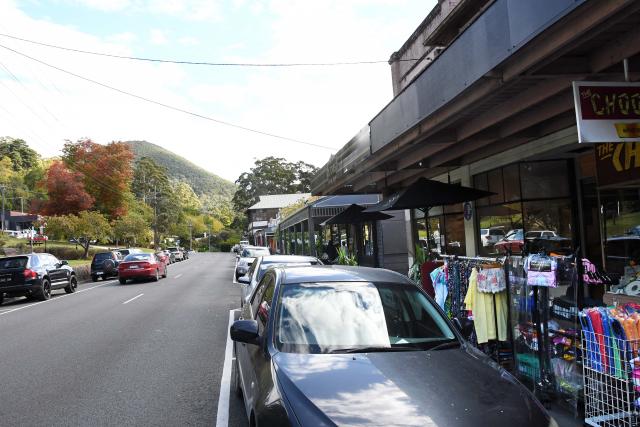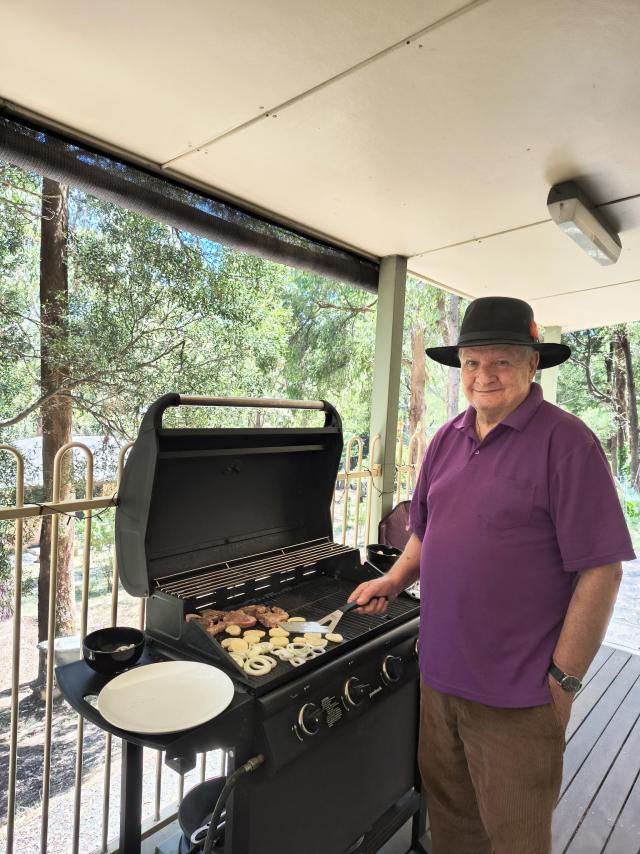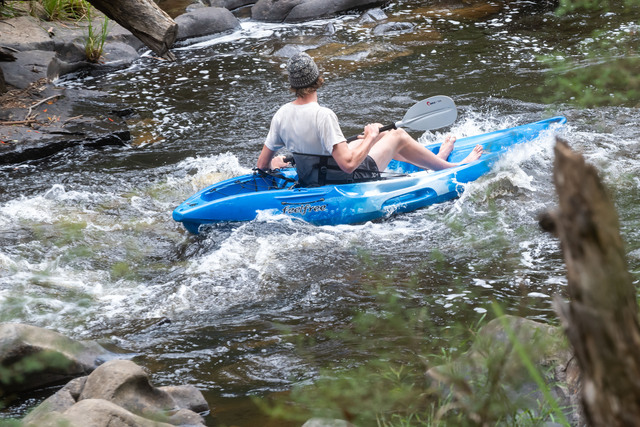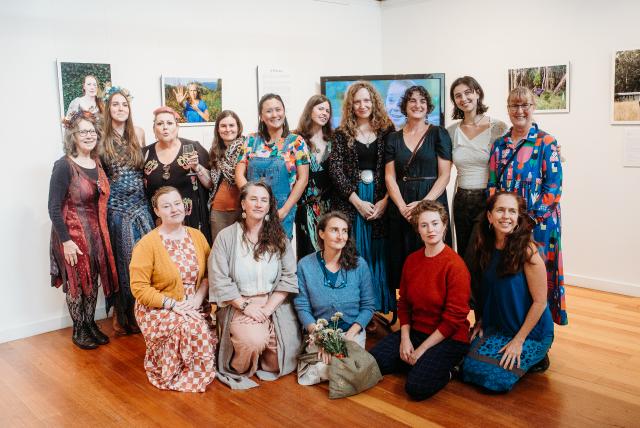MARYSVILLE CFA volunteer Travis Gleeson had trouble convincing his partner that she wasn’t to come back to Marysville from Alexandra on the night of 7 February last year.
She was desperate to get their dog, and whatever else she could from their house.
“She didn’t believe me that a fire could wipe out a whole town,” said 26-year-old Travis, who had miraculously survived a firestorm on Kings Road to make it to the safety of the local football ground as the whole of Marysville exploded.
“After seeing what I’d seen, I didn’t know what might be happening down towards Buxton and Taggerty,” he said.
Marysville has been hit by big fires before, but not the town.
It’s a comment that’s been made many times over the past year, that there was a belief that the town wouldn’t burn.
“We always knew there was the potential for fire to come into Marysville, but generally, the feeling was that the town itself was pretty safe,” says brigade captain Glen Fiske.
The Black Saturday bushfires didn’t follow the rules.
All the usual preparations had been made for a total fire ban day and Mr Fiske had organised for members to be at the station around 1.30pm.
The tanker crew led by Chris Haden was first out, joining a regional strike team at the Murrindindi mill fire.
Not long after, Marysville’s pumper was sent to a fire on the Acheron Way – between Narbethong and Marysville.
Mr Gleeson said they got as far as Granton and realised they were facing a much bigger threat.
Glen Fiske and Second Lieutenant John Ratclifffe joined them in the support vehicle to see what they were up against.
“When we came down from Mt Gordon, looking across the river, the paddocks were just rolling flames and the fire activity was increasing in the bush,” Mr Fiske said.
With just one tanker there was little they could do, and there was an urgency to get back to Marysville before they were overtaken by the fire.
“We wouldn’t head further into a fire, and fire behaviour tells you it travels quickly uphill and trucks travel slowly uphill,” Mr Fiske said.
Any sense of time is lost with both the speed with which the fire escalated, and the tragic loss of life and of the town creating a melting pot of experiences and emotions.
Back at the station they called for more CFA resources and crews did a few patrols around the town.
Glen Fiske went home to see his wife Liz and son Dalton at some point. It was the last time he saw them alive.
That story is well documented, he says, and it is the brigade story he, and others want to share now.
A fire had started on the southern boundary of the town, on Kings Road.
“The tower must have detected it at the same time,” said Mr Fiske. “As we were calling it in DSE crews were turning up.”
The wind had sprung up and as CFA and DSE crews raced out of town the SES were cutting someone out of a car crushed by a falling tree.
Although the main fire was rapidly catching up with the spot fires on Kings Road, Mr Fiske said it was thought that they would be dealing with a flank fire which, if it kept travelling south would go past the township.
The wind change turned all that around.
Accounts of the fireball which erupted when winds estimated at 140 kilometres an hour swept around are chilling.
Chris Haden, team leader on the Marysville tanker described the fireball as a massive rolling wave of fire, crowning in the top of the trees and instantaneously enveloping the 50 or so firefighters in a ball of flame.
The other Marysville crew, Travis Gleeson, David Evans, Kellan Fiske, Mark Hamdorf and Patrick ‘Paddy’ Flannagan, were lucky to make it out.
Mr Gleeson and another crew member scrambled into the truck.
“Me and another man were the last men on and as soon as our bums hit the seat a tree fell in front of the truck.”
Flames were hitting the side of the truck … running all around it and across the windscreen and they knew every other truck behind them was the same.
The heat was searing, melting anything on the truck was wasn’t metal. To get out of any of the trucks would have been fatal.
“Our driver (David Evans) decided the only way out was to drive over the top of it. He reversed up and just drove straight through. That cleared the way for the DSE and others,” he said.
“They followed our flashing light; it’s all you could see through the smoke and flames.
“The whole time flames were coming in out of the bush and around the truck.”
Mr Gleeson always had faith they would make it, he says.
“Living in the town we knew where we had to go. All we had to do was get there.”
Simultaneously the fire station, where Mr Fiske was monitoring the Kings Road situation, and the adjoining SES depot, were hit.
“There was no delineation in the timing. It was just huge. The SES building and cars in the car park were all on fire,” he said.
The images which shocked the world on the Sunday morning were what everyone in Marysville was living through at that time.
It was terrifying for the group of 10 or so people isolated at the fire station who must have been consumed with worry about their loved ones.
Still reeling from their Kings Road ordeal, the Marysville tanker and pumper crews made a run during the night, back through the burning town to bring them back to the safety of the oval.
Once the firestorm had passed Mr Fiske and local policeman Ian Thompson had done a circuit of the town. His home was among the hundreds destroyed.
“All through the night I was trying to play out scenarios of how they might have been saved,” he said. “Where they might be.”
The personal cost to volunteer firefighters involved in the Black Saturday fires is one which should be acknowledged and respected in the context of the commitment made.
You have an understanding of the risk of your own mortality, but it is (what happens to) the people around us that affects us,” Mr Fiske says.
“People like Chris (Haden) have seen more than they would ever need to see; we have all seen more than we would ever need to see … it’s part of what you do.
“You do it because if you don’t, it doesn’t happen. When it’s beyond your control, you just have to cope with what you have and do the best for everybody who is there,” he said.
“This is our community and we are the people who have put our hand up, rightly or wrongly, to take on these roles.
He is hugely proud of his brigade.
“They did an enormous job. The whole brigade took every direction that was given, fell back to their training and worked enormously as a team.
“Those boys were so close to not coming out of Kings Road, their lives were absolutely on the line. That’s dedication.
“You can’t say there was more to be done … it was just all-consuming.”
Marysville’s last stand
Digital Editions
-

Top article for April: Immigration brought into focus
April saw the Star Mail’s federal election survey uncover what Yarra Ranges residents thought about key election topics, with one main focus being immigration. Our…





